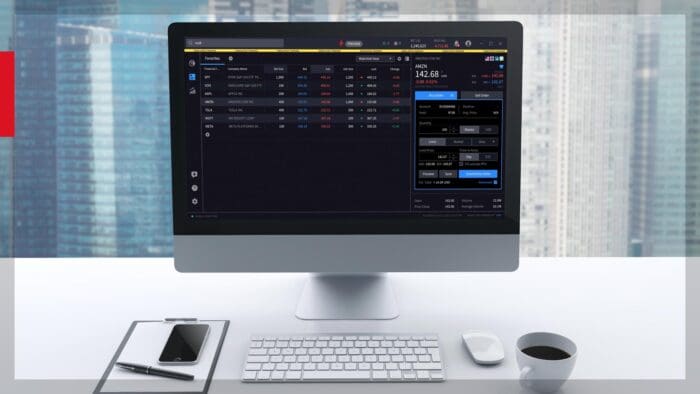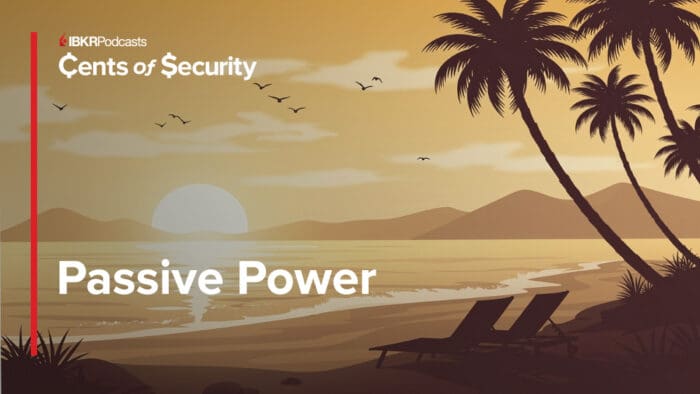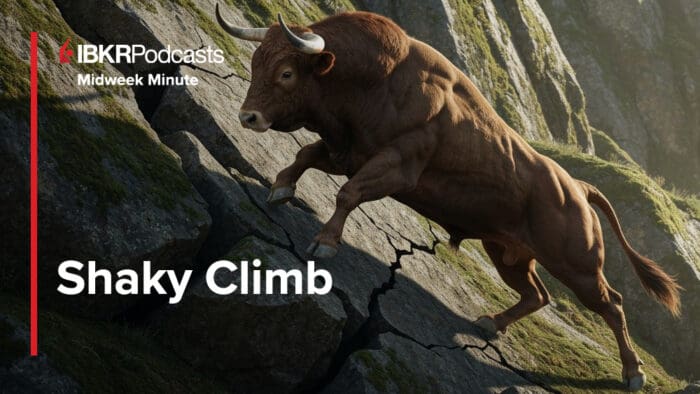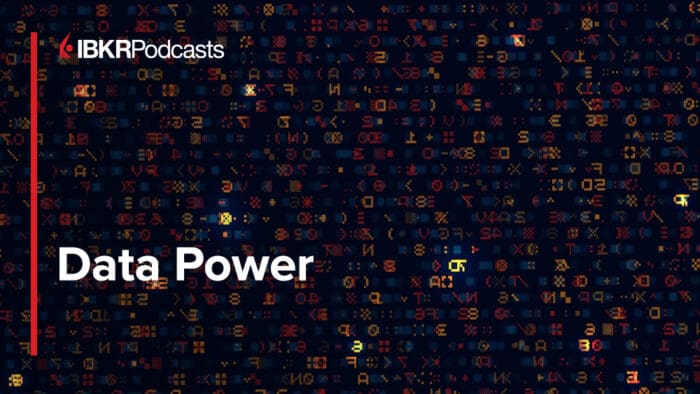In this episode, we dive into the world of backtesting with Matt Amberson, Principal at ORATS, to uncover how data-driven insights can optimize options trading strategies. Learn how backtesting helps investors navigate uncertainty, refine entry and exit points, and predict future performance with greater confidence.
Summary – IBKR Podcasts Ep. 210
The following is a summary of a live audio recording and may contain errors in spelling or grammar. Although IBKR has edited for clarity no material changes have been made.
Andrew Wilkinson
Welcome to this IBKR podcast. My name is Andrew Wilkinson, and in this episode, I’m going to be chatting all about backtesting option strategies. My guest is Matt Amberson, who’s the Principal at Option Research and Technology Services, or ORATS for short. Welcome, Matt. How are you?
Matt Amberson
I’m doing great. Great to be here. Good to see you. Let’s get to my favorite subject.
Andrew Wilkinson
Let’s get underway. Can you explain for the audience, in a nutshell, what does backtesting involve, please, Matt?
Matt Amberson
Yeah, definitely. I mean, we’ve had data forever at ORATS, and people go, how do you know that your data is good? How do you know that it works? I go, well, let’s put a backtesting platform together. And so, in a backtesting situation, you simulate a strategy that you want to trade. Let’s say short a put spread.
And you say, okay, I’m going to short this put spread every time this happens, this entry criteria, and then I’m going to see how it does. And we do things like we have very clean historical data. We have trading assumptions, and all is important to do, cause you need to—we call it slippage.
And you might know it as just crossing the bid-ask spread. And then we also have commission assumptions in there, and we then go through and pretend we’re trading. So, backtesting is a cheap way to see how you’re going to do in a particular situation, Andrew.
Andrew Wilkinson
Okay. And how does that help the investor, and particularly the options investor, Matt?
Matt Amberson
Yeah, well, it saves them some money often. But mostly what I like is it shows people what to expect from a particular trading strategy. And also, what is the difference between trading? There are so many decisions now, like all these days to expiration, all these different strikes, which ones could you possibly choose?
And no, well, backtesting could help you on that. And of course, the past doesn’t always reflect the future, but it gives you a pretty good rhyme of it. And so, backtesting helps you by having you see what comes out historically, and as an investor, what are my expectations? What are the things I’m looking for? What do I want to accomplish by using options? And that’s what backtesting can help with.
Andrew Wilkinson
So, help me out a bit here. What’s the critical element? Is it testing to find the best strategy, or is it testing to find the best entry or exit points?
Matt Amberson
You ask the hard questions, Andrew. So, I would say what you’re trying to do is make a successful trade in the future. And so, with incomplete and inaccurate, sometimes, knowledge about what is going to happen, you have to use a backtest to inform these decisions placed in uncertainty.
And so, what’s critical about backtesting is you want to get as much information as possible. You don’t just say, I’m going to find the best one that’s overfit and did the best. What you want to do is dig deeper, really work at it, compare other symbols, or maybe, or do other techniques that can help you predict and have the best future tests. You don’t want the best backtest. You want the best future results.
So, that’s the critical part, and that’s difficult.
Andrew Wilkinson
Can you apply backtesting across all symbols, or even across all markets, or do you need to test symbol by symbol?
Matt Amberson
That’s part of the critical point, is that you want to find something that doesn’t just work for one particular symbol. You could get similar symbols, and then another similar symbol, and then a different symbol and understand why a strategy works with one and doesn’t with the other.
And when you could start to explain all that, you’re really learning about the crux of the situation and what needs to happen in the future for you to be successful with your option investment. And yes, definitely want to test it over many symbols. We have ways in our design of our backtesting to say, okay, make it easy to take all these different assumptions and put it on a different symbol. See how that did. Okay.
Then go in and say, what if I adjust this thing? How well does it do? So, all of those are very important in order to predict and try to come up with the best performing strategy in the future using those techniques.
Andrew Wilkinson
Where have you found that the backtesting kind of really lights up the room? What works well?
Matt Amberson
I think the coolest thing, and I learn things all the time. I’ve done millions, hundreds of millions. I mean, we have 181 million pre-run tests on the Interactive Brokers platform right now. So, I’ve done those times 10. So, I’ve seen so many backtests, and I always learn something. But what are the coolest things I’ve learned?
And I used to be a market maker, and I kind of had this in the back of my head. So, I had these theories, and I could prove them out. But one of the neat things that, like a rule of thumb that I’ve now learned is, when the volatility is really high and it seems like it’s really high, you might be tempted to sell it.
But really, what I’ve learned in backtesting is there’s a kind of something keeping implied from going to even the correct heights when it gets really high. So, I’ve come up with a theory like they don’t get the IV as high as they should when it’s high, and they don’t get it as low as they should when it’s low.
So, that’s like just one of the many kind of rules of thumb and neat things that you learn from backtesting is like, oh, even though it’s high, doesn’t mean sell it. It actually means it could be the opposite. It could mean they’re not getting it high enough. So, those are some really neat things to learn from backtesting.
Andrew Wilkinson
And have you stumbled across things that just don’t work?
Matt Amberson
Well, I mean, I think when I’ve had my least success implementing some of these strategies, it’s when you take the lazy way out. Backtesting is not lazy, and if you’re going to make it work, you’re going to have to really work at it, meaning do some of the things that you brought up before—testing different symbols, testing different days to expiration, testing different strikes to use.
If you really get into it and really measure it, you’re going to do well. But if you just take the lazy way out and go, oh, this is the top of your 181 million tests. I’m just going to use that. I could tell you that’s probably the most overfit.
One of the no-nos of backtesting is you want to find something that works in many different situations. That might be a starting point, but that’s not an ending point. So, when you just are lazy, choose the top one without really testing it, those are where I get in trouble, Andrew.
Andrew Wilkinson
Matt, I think you could spend hours playing with this software. Would you say it’s of equal value to both new traders new to options as well as to those who have been trading options for years?
Matt Amberson
Everyone can get something out of backtesting. I learn things, and I have been doing this, you know, fifteen years. And thanks. Thanks for being one of the listeners. And I know you’ve been on the show for several months. You’ve been getting some great stuff going in there on the web.
But I also know that you’ve been doing some great things right now. It has some aha moments often. And I mean, you should—the greatest thing for having a company like mine is hearing from these guys. It just accelerates and just gets them so thrilled to be able to understand what’s going on.
Whereas before, I remember the first day on the floor, I went around and I said, what are all these numbers? What is going on? And when you start to get it, you go, ah, you walked out, and you go, I get this now. Backtesting does that for people, and there’s nothing that makes you feel better than when someone just writes this glowing email and says before I was a newbie, and now I feel like I understand at least part of what’s going on in the options game out there.
Andrew Wilkinson
For the listener, the ORATs backtesting software is available to IBKR clients at no cost in the Discover section of Trader Workstation and the IBKR mobile app.
And Matt Amberson, thank you very much for joining me on this IBKR podcast.
Matt Amberson
Thanks, Andrew, it was great.
Andrew Wilkinson
And as a reminder to our audience, if you like what you heard in this episode, please do remember to subscribe to our channel from wherever you download your podcasts. Thanks, everybody. Bye for now.
Disclosure: Interactive Brokers
The analysis in this material is provided for information only and is not and should not be construed as an offer to sell or the solicitation of an offer to buy any security. To the extent that this material discusses general market activity, industry or sector trends or other broad-based economic or political conditions, it should not be construed as research or investment advice. To the extent that it includes references to specific securities, commodities, currencies, or other instruments, those references do not constitute a recommendation by IBKR to buy, sell or hold such investments. This material does not and is not intended to take into account the particular financial conditions, investment objectives or requirements of individual customers. Before acting on this material, you should consider whether it is suitable for your particular circumstances and, as necessary, seek professional advice.
The views and opinions expressed herein are those of the author and do not necessarily reflect the views of Interactive Brokers, its affiliates, or its employees.
Disclosure: ORATS
The opinions and ideas presented herein are for informational and educational purposes only and should not be construed to represent trading or investment advice tailored to your investment objectives. You should not rely solely on any content herein and we strongly encourage you to discuss any trades or investments with your broker or investment adviser, prior to execution. None of the information contained herein constitutes a recommendation that any particular security, portfolio, transaction, or investment strategy is suitable for any specific person. Option trading and investing involves risk and is not suitable for all investors.
All opinions are based upon information and systems considered reliable, but we do not warrant the completeness or accuracy, and such information should not be relied upon as such. We are under no obligation to update or correct any information herein. All statements and opinions are subject to change without notice.
Past performance is not indicative of future results. We do not, will not and cannot guarantee any specific outcome or profit. All traders and investors must be aware of the real risk of loss in following any strategy or investment discussed herein.
Owners, employees, directors, shareholders, officers, agents or representatives of ORATS may have interests or positions in securities of any company profiled herein. Specifically, such individuals or entities may buy or sell positions, and may or may not follow the information provided herein. Some or all of the positions may have been acquired prior to the publication of such information, and such positions may increase or decrease at any time. Any opinions expressed and/or information are statements of judgment as of the date of publication only.
Day trading, short term trading, options trading, and futures trading are extremely risky undertakings. They generally are not appropriate for someone with limited capital, little or no trading experience, and/ or a low tolerance for risk. Never execute a trade unless you can afford to and are prepared to lose your entire investment. In addition, certain trades may result in a loss greater than your entire investment. Always perform your own due diligence and, as appropriate, make informed decisions with the help of a licensed financial professional.
Commissions, fees and other costs associated with investing or trading may vary from broker to broker. All investors and traders are advised to speak with their stock broker or investment adviser about these costs. Be aware that certain trades that may be profitable for some may not be profitable for others, after taking into account these costs. In certain markets, investors and traders may not always be able to buy or sell a position at the price discussed, and consequently not be able to take advantage of certain trades discussed herein.
Be sure to read the OCCs Characteristics and Risks of Standardized Options to learn more about options trading.
Disclosure: Options Trading
Options involve risk and are not suitable for all investors. For information on the uses and risks of options, you can obtain a copy of the Options Clearing Corporation risk disclosure document titled Characteristics and Risks of Standardized Options by going to the following link ibkr.com/occ. Multiple leg strategies, including spreads, will incur multiple transaction costs.

















Join The Conversation
For specific platform feedback and suggestions, please submit it directly to our team using these instructions.
If you have an account-specific question or concern, please reach out to Client Services.
We encourage you to look through our FAQs before posting. Your question may already be covered!